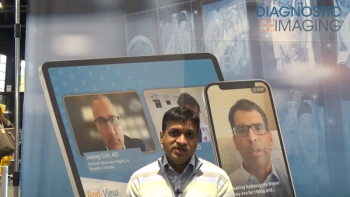
MRI offers integral assessment of cartilage repair
In the first study in its kind, Japanese researchers have shown that MR imaging before and after contrast medium injection provides an accurate evaluation of articular cartilage repair. The technique could become an effective way to monitor treatment in this setting.
In the first study in its kind, Japanese researchers have shown that MR imaging before and after contrast medium injection provides an accurate evaluation of articular cartilage repair. The technique could become an effective way to monitor treatment in this setting.
Gadolinium-enhanced MRI has become the preferred noninvasive method to evaluate surgical replacement of damaged cartilage tissue, also known as autologous chondrocyte implantation (ACI). MR's accuracy in gauging glycosaminoglycan (GAG) concentration provides a reliable indicator of reparative cartilage's quality.
To date, most clinical studies have relied on post-gadolinium-enhancement measurements. But this method might not be suitable for evaluating reparative cartilage after ACI, according to principal investigator Dr. Atsuya Watanabe, who led a team of orthopedic surgery and radiology experts from Chiba University and the National Institute of Radiological Sciences in Chiba City.
Watanabe and colleagues found that both pre- and postcontrast imaging is necessary for a proper MR evaluation of articular cartilage repair. They came to this conclusion after evaluating knees from nine ACI-treated patients who underwent second-look arthroscopy with biopsy at one year and 1.5T MRI at nearly two years after ACI. Results showed a significant correlation between pre- and postcontrast images and the GAG concentration.
Reparative cartilage in all patients had a lower GAG concentration and a different histologic appearance compared with normal cartilage. Postenhancement measurements alone did not enable detection of GAG concentration differences between reparative and normal cartilage. But comparative measurements did (Radiology 2006 Apr;239[1]:201-208).
The study's limitations included the relatively small sample size and the time difference between biopsy and MRI evaluation. The two-hour delay between scan times also raises questions about its clinical feasibility. Reimbursement issues pose further hurdles.
Yet the study could have implications for further clinical applications in different types of cartilage evaluations. Existing methods provide only an anatomic perspective. The technique described by the Japanese researchers, however, could be used for quantitative and qualitative articular cartilage assessments, said Dr. Douglas P. Beall, chief of musculoskeletal imaging at the University of Oklahoma Health Sciences Center.
"MR imaging can measure glycosaminoglycan content, which defines articular cartilage's strength. This, therefore, is a noninvasive way of measuring the amount and integrity of the articular cartilage," Beall said.
For more information from the Diagnostic Imaging archives:
Newsletter
Stay at the forefront of radiology with the Diagnostic Imaging newsletter, delivering the latest news, clinical insights, and imaging advancements for today’s radiologists.



























